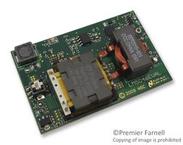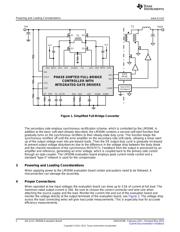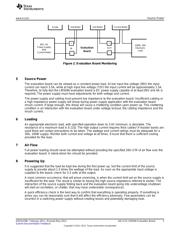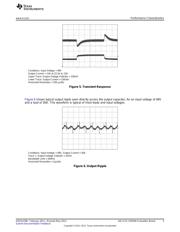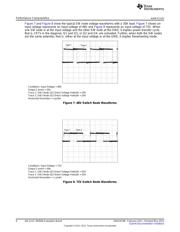下载

User's Guide
SNVA470B–February 2011–Revised May 2013
AN-2115 LM5046 Evaluation Board
1 Introduction
The LM5046 evaluation board is designed to provide the design engineer with a fully functional power
converter based on the phase-shifted full-bridge topology to evaluate the LM5046 PWM controller. The
evaluation board is provided in an industry standard quarter brick footprint.
The performance of the evaluation board is as follows:
• Input operating range: 36V to 75V
• Output voltage: 3.3V
• Measured efficiency at 48V: 92% @ 30A
• Frequency of operation: 420kHz
• Board size: 2.28 × 1.45 × 0.5 inches
• Load Regulation: 0.2%
• Line Regulation: 0.1%
• Line UVLO (34V/32V on/off)
• Hiccup Mode Current Limit
The printed circuit board consists of 6 layers; 2 ounce copper outer layers and 3 ounce copper inner
layers on FR4 material with a total thickness of 0.062 inches. The unit is designed for continuous
operation at rated load at <40°C and a minimum airflow of 200 LFM.
2 Theory of Operation
The Phase-Shifted Full-Bridge (PSFB) topology is a derivative of the classic full-bridge topology. When
tuned appropriately the PSFB topology achieves zero voltage switching (ZVS) of the primary FETs while
maintaining constant switching frequency. The ZVS feature is highly desirable as it reduces both the
switching losses and EMI emissions. Figure 1 illustrates the circuit arrangement for the PSFB topology.
The power transfer mode of the PSFB topology is similar to the hard switching full-bridge, that is, when
the FETs in the diagonal of the bridge are turned-on (Q1 and Q3 or Q2 and Q4), it initiates a power
transfer cycle. At the end of the power transfer cycle, PWM turns off the switch Q3 or Q4 depending on
the phase with a pulse width determined by the input and output voltages and the transformer turns ratio.
In the freewheel mode, unlike the classic full-bridge where all the four primary FETs are off, in the PSFB
topology the primary of the power transformer is shorted by activating either both the top FETs (Q1 and
Q4) or both the bottom FETs (Q2 and Q3) alternatively. In a PSFB topology, the primary switches are
turned on alternatively energizing the windings in such a way that the flux swings back and forth in the first
and the third quadrants of the B-H curve. The use of two quadrants allows better utilization of the core
resulting in a smaller core volume compared to the single-ended topologies. Further, the ZVS of the
primary FETs results in low EMI compared to the conventional hard-switching full-bridge topology.
All trademarks are the property of their respective owners.
1
SNVA470B–February 2011–Revised May 2013 AN-2115 LM5046 Evaluation Board
Submit Documentation Feedback
Copyright © 2011–2013, Texas Instruments Incorporated

